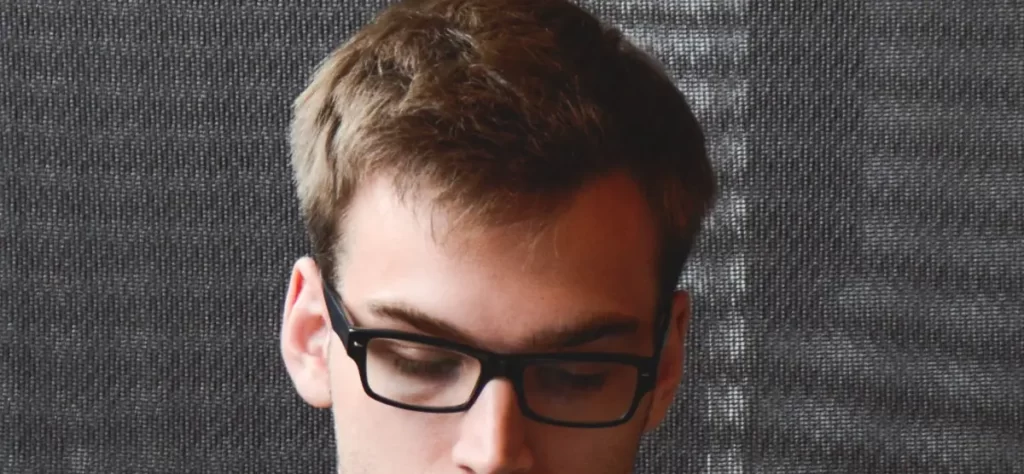Forehead hair transplantation is a surgical procedure performed to restore hair to an area of the forehead where it may have been lost due to baldness. The surgery involves removing hair follicles from a donor area of the head and transplanting them to a recipient area on the forehead.
Table of Contents
- Introduction to forehead hair transplantation
- Factors to consider prior to forehead hair transplantation
- Objective of performing forehead hair transplantation
- What techniques exist to conceal wide foreheads with the hairline?
- Front hairline design
- Hair structure in the temple regions
- Previous hair diagnosis for forehead hair transplantation
- Naturalness in the front design
- Conclusion on forehead hair transplantation
Introduction to forehead hair transplantation
This is done in order to achieve a natural and uniform appearance. The procedure is performed under local anesthesia and usually lasts between 8 and 10 hours. Full recovery may take 8 to 12 weeks.
A forehead hair transplant is a major surgery that requires knowledge and experience and is difficult to return and recover from. The most important factor that determines the success of a hair transplant is the frontal design of the hairline. The density and the hair in the front should be styled according to the shape of your face. The correct determination of this line is only possible with esthetic knowledge.
That is why it should be done under the supervision of a cosmetic surgeon with experience in the field of eyelash line design. In patients in whom the first row of hair starts very high, a forehead that the patient himself describes as a wide forehead is noticeable. The most common cause is heredity, which can be inherited from generation to generation and manifest from birth, in turn, more or less rapid progressive hair loss during androgenic alopecia.
Inquiries for a wide forehead line tend to be more common among women than men, hoping to reduce the size of the forehead and temporarily seek a more rounded forehead line for a more feminine look. Until then, patients usually hide this wide forehead with a haircut and various types of bangs.
Factors to consider prior to forehead hair transplantation
The patient’s sex, head size and shape, age, facial structure, hair size and shape, the amount of grafts at the site where the roots will be taken, the hairstyle desired by the person, as well as the density and continuity of the hair are important. considerations
Objective of performing forehead hair transplantation
Opting for a new natural hairline involves taking into account several factors, such as age, ethnicity, the possibility of hair loss as a related process, the density to be achieved, the angle of birth of the new hair or the distance between the first hairs.
Distance between hairline and eyebrows. In this last aspect, it is generally recommended that the distance between the first hair of the eyebrow and the glabella (between the eyebrows) be about 7-8 cm, but sometimes it is better to proceed with caution, especially in younger patients during the evolution. .
Because possible future hair loss can make the patient look unsightly.

What techniques exist to conceal wide foreheads with the hairline?
There are several techniques for lifting the hairline to hide a wide forehead.
1) Anterior scalp stripping techniqueSeveral authors (Juri, Fleming Mayer) described different techniques of capillary strips that, although they were popular at the time because they allowed obtaining a very dense implant line and practically immediate results, the reality is that postoperative complications have led them to total disuse today.
2) Surgical resection of the excess skin with irregular incisions that are imperceptible and respect the hair follicles to grow through the scar so that the incision is as inconspicuous as possible: although it is a fast, safe and well tolerated technique, it requires great skill on the part of the surgeon to perform a very delicate suture and is always subject to the individual healing of each patient in an area that is very visible, so it follows that the main complications are of the scar type.
3) Hair transplant: consists of extracting a thin strip of skin with hair from the donor area of the nape of the neck and then inserting the previously dissected grafts. We try to look for the best aesthetics and naturalness possible at the front line level with follicular units of 1 single hair and a higher density at the back level with grafts of 2-3 hairs.
The results obtained are usually good, although it should be kept in mind that depending on the patient’s expectations, several sessions may be necessary to achieve the desired hair density.
4) FUE hair transplantation is the most popular hair loss restoration method because it provides natural results. One of the keys to great aesthetics is the front-end design phase, as it is the most visible part.
Front hairline design
The frontal design that defines the hairline varies from person to person. Because the head and face are different, standard measurement methods cannot be used. For this purpose, the dimensions of the blast line design must be adjusted. In addition to the anatomical structure of the head of the body, the calculation of the frontal hairline should also include personal characteristics such as age, facial structure, etc.
Begin the front design of the hairline by determining the first rising edge of the forehead and the lowest point for the transition to the horizontal area of the head and the midpoint of the edge between the two eyebrows. This point is considered the middle of the hairline.
The edge of the natural hairline is inclined at a 45-degree angle, connecting the skin face to face and moving from vertical to horizontal. The line defined by this angle may be slightly elevated depending on the size and age of the person. Again, the tip of the contour should be V-shaped and the hair should be correctly oriented.
Especially for men, the V-shaped design on the forehead hairline should also match the shape of the patient’s skull and facial features. For example, on the face frame, the front hairline should be at a wide angle to the temple area. On the contrary, in the case of a narrow head, this line should be concave. How the lines will bend and how far up or down is where science meets art. Estimates of hair density and distribution where the hairline begins are directly proportional to the stylist’s ability to style.
All these criteria must be properly planned to create a perfect hairline. The so-called space-time angles formed by the two sides of the V must be equal to each other. The parting line, measuring line, hair angle and thickness in the temporal part are determined according to the facial structure and age of the person.
Holes in this area can cause a person to lose natural visual balance, while reflections can make them look like a wig. In this area, as in other areas, there are no fixed rules for the size of the setback. This is where human design capability comes to life and becomes the most important factor that determines the success of the hair transplantation process.
Hair structure in the temple regions
The bangs in the face and forehead area provide a natural midpoint for the look, and the width of the midpoint creates a slight forward slant and a wide parting in the temple area and then connects to the hair in the temple area. Correct placement of all folds.
These are the factors. At the frontal hairline and temples, the hair has an irregular but symmetrical structure of depressions and bumps. In other words, there is a mixed but regular picture. A frontal hairline consisting of pits and recesses, but consisting of single and multiple grafts, providing a more natural look.
The cracks and ridges in the attached follicles look like the natural human hairline in the front, and the hair roots should go in the same direction. The mosaic of light that forms at the temples, known as the male hairline, is the most ideal hairline.
Previous hair diagnosis for forehead hair transplantation
Another important thing to consider when constructing a forehead hair transplant is the previous hair diagnostics. Specifically, the number of follicular units can be obtained from the recipient area to cover the donor area affected by hair loss.
Naturalness in the front design
Finding the naturalness of the cover is fundamental. To this end, symmetry was sought during the design phase. However, when making a cut, certain irregularities are sought, so the result will be very natural, since no one has a perfectly linear and symmetrical first line.
Conclusion on forehead hair transplantation
Forehead hair transplantation is a viable option for those who wish to improve the appearance of their hair. Hair transplantation is a safe and effective procedure to improve the appearance and density of forehead hair.
However, the outcome of forehead hair transplantation depends on many factors, including the condition of the hair and the amount of hair transplanted.
Therefore, before performing forehead hair transplantation, it is important to consult with a medical professional to evaluate your condition and determine if it is a good option for you.
If you are interested in recovering your hair and feel confident and attractive again, do not hesitate to contact the specialists of the Kbapel Hair Transplant Clinic. With our extensive experience and state-of-the-art technology, we can offer you customized and effective solutions for your needs. Call 55 5203 0084 or fill out our contact form to answer your questions and doubts and send you more information. We are waiting for you!
Related articles:
- Beard Implant (Graft) CDMX
- The best hair transplant in Mexico City For Canadians And Americans
- Hair transplant in Mexico City
- What is hair transplantation? And other interesting data
References: Forehead Reduction – Hair grafting performed to lower the forehead line
If you wish to contact us, you can send us a message and we will be sure to respond as soon as possible. We look forward to hearing from you!
Perfil del Autor
- Dr. Mario García Carmona
-
El Dr. Mario García Carmona es un destacado miembro del equipo médico de la Clínica Kbapel, líder en microinjertos capilares en México. Con más de 18 años de experiencia en el campo de la restauración capilar, el Dr. García Carmona es un referente en la aplicación de la técnica F.U.E. (Follicular Unit Excision), conocida como “cabello por cabello”, que garantiza resultados 100% naturales.
El Dr. García Carmona es Médico Cirujano egresado de la Universidad Nacional Autónoma de México en 2008, con cédula profesional 6556526. En 2010, se unió a la primera clínica de microinjerto capilar con técnica F.U.E. en México, donde se formó como consultor y médico, integrándose al equipo de injerto de cabello por más de tres años. Desde 2013 hasta 2016, trabajó en una clínica privada reconocida por su manejo integral de la alopecia, combinando tratamientos farmacológicos y técnicas avanzadas para tratar la calvicie y la caída del cabello.
